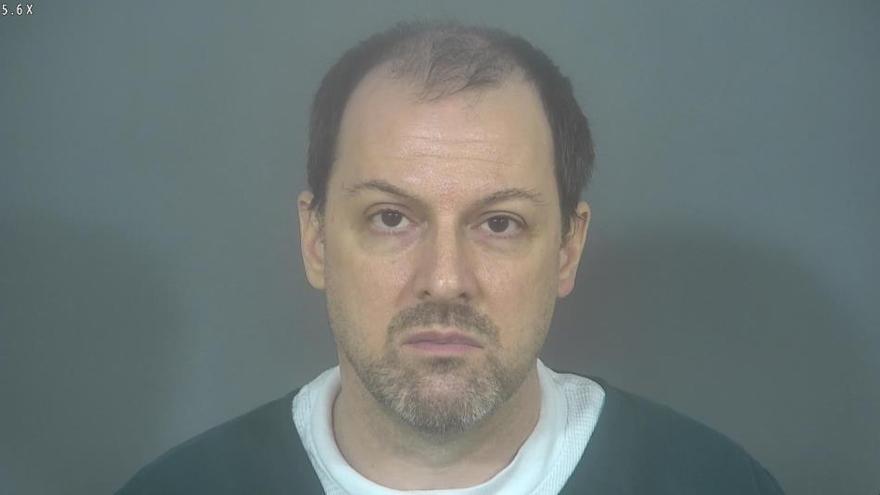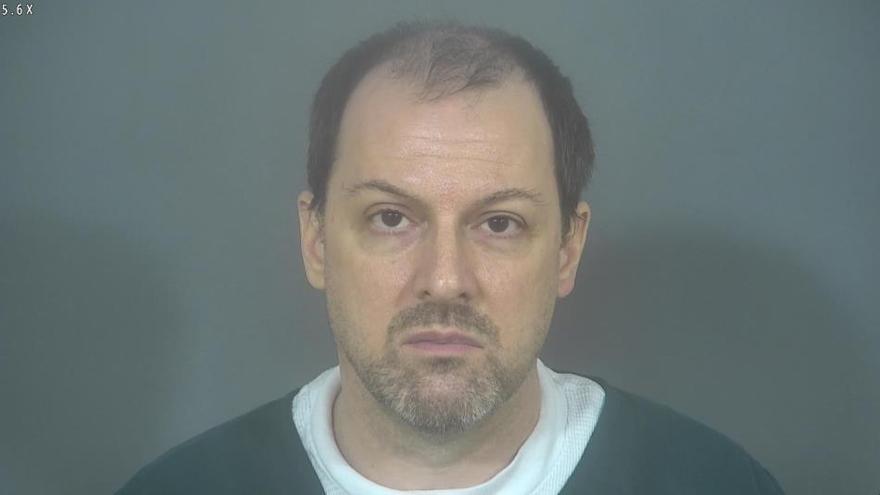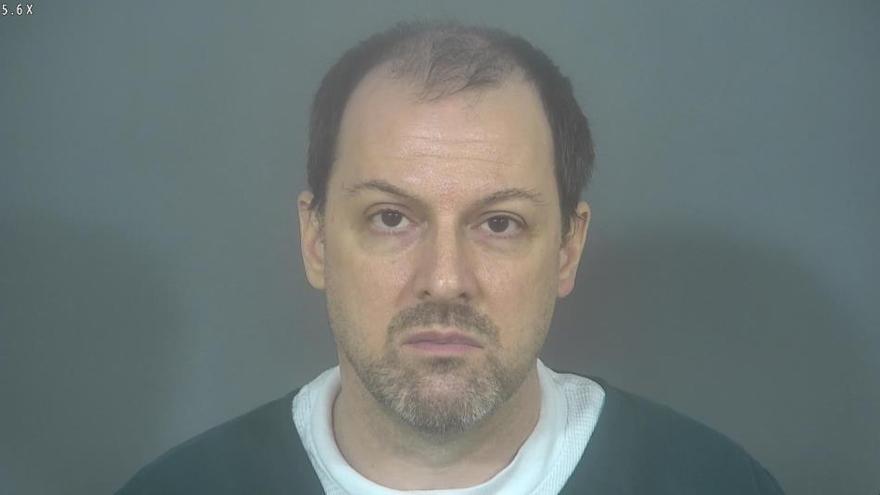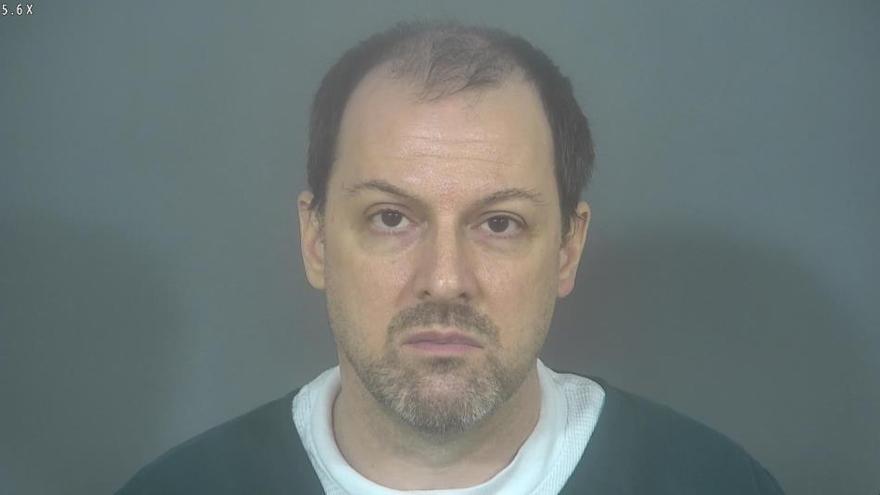Day 1 of Jeff Pelley’s post-conviction relief evidentiary hearing
See Also
Each side was given ten minutes to present an opening statement.
Pelley’s attorney, Frances Watson, told the court they would be presenting information that the defendant’s counsel was ineffective.
During the trial, the state presented Pelley’s blue jeans that he was wearing before the prom were found in the washing machine and had been washed. The jeans were actually seized from the trunk of Pelley’s vehicle.
Watson also said there was no record of an interview with Toni Beeler, who provided information to the state about Bob Pelley’s job in Florida.
The state gave a brief statement.
After opening statements, Watson attempted to enter an FBI file into evidence in the case. The defense argues the information in the file is important to their case. The state argued the FBI file is hearsay.
The judge allowed the FBI file to be entered into evidence because the state had entered it into evidence and confirmed it was a business record.
The first witness is Craig Whitfield, who was with the Mishawaka Police Department from 1978 to 2002. In 2002, he joined the cold case unit at the prosecutor’s office from May to December 2002. Whitfield is the one who wrote the probable cause affidavit that laid the basis for Pelley’s arrest in 2002.
He said there were 125-130 cases that were cold. The Pelley case was considered a priority case because there were so many victims and two of them were children.
He confirmed at the time Jeff Pelley was a person of interest in the case.
In July 2002 he reviewed the evidence in the case.
Watson asked about the receipt that was found in the pocket of the jeans. He testified from what he recalled the record said the receipt was found in the jeans. He was unaware he didn’t have the full FBI report.
In 2013 or 2014 he gave a deposition with Watson. He reviewed it yesterday and he was asked if there was anything that was inaccurate. He said there wasn’t.
On November 7, 2002, Whitfield testified under oath the blue jeans were taken from the washing machine. He said he did not recall but did not object to the record.
Why did he think the jeans came from the washing machine? The state objected to the question as hearsay.
After a short discussion, Watson offered to backtrack and continued questioning.
As she continued questioning, the state objected to another document the defense presented.
At this point, the judge told the attorneys that because this is an evidentiary hearing and not a trial, all questions and objections will be viewed from that perspective.
The defense attempted to learn how Whitfield determined the jeans were in the washer.
Whitfield testified that before he was assigned to the case, he and a person investigating the case talked about the blue jeans and shirt being found inside the washer.
While looking at evidence in 2002, he did not see an inventory receipt that said the jeans were from the washer.
He confirmed he believed the jeans were in the washer and had been washed. He testified he read they had been found in the washer but could not remember where.
The next piece of evidence presented is a letter to the FBI lab in 1989 that lists items of evidence for testing. The state objected, but because the document was part of the trial record and was part of the file already submitted, the objection was overruled.
This letter, dated May 8, 1989, did not say the jeans were in the washing machine. Whitfield doesn’t recall if he saw that part of the letter.
On the third page, Whitfield was asked to read a paragraph silently, then was asked
The document includes a list of items Whitfield believed were from the washer. He said yes, the info came from someone who was there. But that person didn’t tell Whitfield he took anything from the washer.
Watson transitioned to asking about Whitfield’s interview with one of Pelley’s sisters.
The state objected to the question for hearsay.
The judge allowed it because she wasn’t going to ask what Jacqui said.
Whitfield testified he visited with her to discuss their family life.
She had him meet her at her attorney’s office. He wrote a report when he returned, which was given to defense counsel.
Did he do any investigation into the Florida connection to the case. He said he wasn’t the only one who was investigating the case. The allegations about money laundering at a bank where Bob had worked in Florida. He doesn’t remember how that turned out.
When did he finish his investigation? December 31, 2002 when he left the prosecutor’s office.
As of Pelley's arrest, had ballistics been submitted to the FBI? Whitfield didn’t recall.
Watson asked Exhibit 107 to be brought into the courtroom.
Exhibit 107 includes two brown bags. One of the bags was the Annis grocery store bag with a smaller bag inside that contained a receipt. Whitfield said a report said Q2 (receipt) was found in the pocket of the jeans.
Whitfield said he based a lot of his information on an FBI report that came back with the evidence and the testing completed on the evidence.
He said when he gave a deposition, Watson showed him an FBI report he had never seen before.
The FBI report says Q2 (blue jeans), left front pocket contents in Ziploc bag. Whitfield’s report said the coins and the receipt were in the pocket of the jeans, according to the defense.
Whitfield said there was a report that said the receipt was in the pocket.
The defense presented the receipt from Annis grocery store in LaPaz for one item costing $1.79 to Whitfield. He confirmed the receipt was readable.
The defense then opened the bag containing the blue jeans and showed them to the court.
Whitfield was then asked if he reviewed the crime scene photos and the video of the scene. He confirmed he did.
Watson then showed Whitfield an evidence photo of clothes on the floor of the laundry room.
The clothes pictured on the floor were never submitted as evidence. The state alleged Pelley took the bloody clothes off in the laundry room and washed them, court records show.
Whitfield never saw photos of the clothes in the washing machine and doesn’t recall seeing photos of the washing machine.
The state then began their cross examination of Whitfield.
Mark Kopinski, for the state, asked Whitfield about Exhibit 107 to see if he saw a specific name on the evidence tape. Whitfield could not find that documentation.
Court took a five minute break.
When the hearing resumed, the court allowed a detective to leave and went over a few quick matters before restarting.
The state and defense both agreed to allow crime scene photos to be brought into evidence.
The next witness will be testifying via Zoom and there was a concern some of the evidence that person will review includes photos from the crime scene. The court agreed to allow the witness to view their own copies of the photos instead of having them shown on the Zoom meeting.
The next witness is Patrick Zirpoli who consulted with the Sherry Black Foundation. He previously worked for the Pennsylvania State Police until his retirement in 2015. Now he works on cold cases as a private investigator.
Zirpoli reviewed the court documents, evidence, FBI file, but did not review everything or talk to witnesses.
When asked by the defense, Zirpoli stated there is no documentation showing the jeans came from the washing machine. He said they’re not on the inventory log.
He said the jeans and the receipt were found in the Annis bag and that’s how they would be collected and sent for testing.
Jeans at the scene don’t fit the story, he said. It didn’t make sense and it doesn’t fit in the scene – someone who picked up the shell casings, wouldn’t then put his clothes in the washer hoping it would take care of any evidence.
Would someone rely on another officer’s memory over documentation, the defense asked. He said that’s not proper procedure. He said you wouldn’t want to rely on anyone’s memory.
He also said it’s important to note where items are located and documented and that helps maintain chain of custody.
Zirpoli was then asked about the results of the luminol test near the washing machine. Evidence shows the luminol test was done in 1989 but wasn’t documented in a report until 2002.
He said it was highly unusual to wait that long to write the report. He said normally photos would be taken while the tests were conducted.
He was then asked about the trial transcripts that reflected items being washed. He restated that it doesn’t make any sense anything was washed.
Zirpoli then said it was likely the killer would have human remains on them, including their hair.
Watson then refers to some of the photos from the crime scene. The photos are not shown to the viewers on the live stream.
The first few photos are from the hallway where Bob Pelley was killed. It shows on the wall there was a swipe in the blood where someone brushed against the wall while the blood was still wet.
Another photo showed the blood spatter on the wall.
One of the photos showed the bathroom. While discussing the scene, Zirpoli said there’s no cross contamination in the scene, which he found unusual since the prosecution believed Pelley went into the bathroom to clean up. Then there were items in the bathroom that were not collected as evidence.
In a photo of the basement stairs it shows a hole. He didn’t understand that at first, but if you look at the video it shows it’s a gunshot going down the stairs. He said the photo isn’t as clear as on the video.
Another photo showed the bloody scene in the basement where Dawn and the girls were killed. Zirpoli said the photos showed how difficult it would be for anyone to leave the scene without getting contaminated with human remains.
He was asked about blood that was found under a ping pong. He questioned why it was photographed but no samples were taken into evidence. He said it is possible it was from another time.
Zirpoli was surprised the shells were collected by the suspect. He assumes they were taken due to fingerprints, but wondered where the person got that knowledge. And why would they collect the shells but leave the clothes behind.
When asked if he thought tunnel vision played a part in arresting Pelley. He said it did and it prevented investigators from pursuing other avenues.
He was also asked about the timeline that the crime happened within 20 minutes or so. He said it doesn’t seem possible to do it in that short of a time.
You have the initial interaction, kill four people, pick up the shells, get your stuff together, then dump all the evidence. Then completely calm down and present “normal” within just a few minutes.
The defense completed their questioning of Zirpoli.
The state questioned Zirpoli about his experience studying blood spatter. He said he studied with an expert in the early 2000s, but does not consider himself an expert in blood spatter analysis.
They asked if was a highly planned crime and Zirpoli confirmed.
He said the incident begins in the hallway and the offender is inside the house. He said from that you can infer there was a connection between the suspect and the victims.
Zirpoli was then asked about a statement he made as part of a podcast. He was quoted as saying the investigation was flawed but the result was not.
In redirect, the defense asked about the evidence he had access to at the time of that interview.
Zipoli said at that time, he had not read the entire trial transcript or the documents provided by the defense.
He said he has changed his mind since then. He was unaware of some of the evidence or that the entire crime happened in approximately 15 minutes.
He was then asked about a quadruple murder of a family he was familiar with. He said in that case the first suspect was a family member, but ultimately it was not the family member.
When asked about the tunnel vision in the investigation. He said there was no new evidence in 2002 when Pelley was arrested, so why wasn’t he arrested in 1989, Zirpoli wondered.
The state then re-crossed and asked if the parsonage was locked up at the time the bodies were discovered.
Court ended for the day.
The hearing will resume Tuesday at 10:30 a.m.







